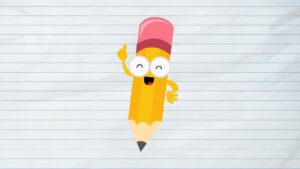ESL Writing Activities – Some Tips for the Teacher
Even with the most imaginative class preparation or the latest technology, teachers and students are often left with a barrage of quite traditional exercises to plough through. From workbooks to revision or exam practice material, teaching environments are often inundated with written exercises, many of them useful but also potentially lifeless. The challenge is whether to skip over them quickly, risk becoming bogged down, or find a new way of doing activities students often perceive as being boring.
Here are some tricks for adding variety to more mundane tasks. I have made three general suggestions that I hope have the potential to make any activity a little more interesting and productive.
1. Remember students do not always have to be doing the same thing at the same time.
We often set exercises for all students to do, usually simultaneously, but this is by no means necessary. Dividing tasks between students will provide an enormous amount of variety and requires virtually no extra planning. Consider the following options:
- Students do different exercises and then compare their answers in pairs, groups or on a class level.
- Students can choose which exercise (or parts) to do and then compare.
- The same principles can be applied to texts, readings and even listenings!
There are immediate benefits to manipulating such alternatives:
- Pacing: you can often get through more material quicker when not focused on class-based completion.
- Different levels within a class can be more easily accommodated.
- Learner autonomy is encouraged as an individual responsibility and subsequent contribution is increased.
- Exchange of information at any level can provide opportunities for genuine interaction.
- Comparing different information from the tasks provides opportunities for students to consider rethink and explain the answers they have arrived at and hopefully make it more memorable.
2. Remember exercises do not have to be done sitting at tables or desks.
Traditional classrooms often expect our students to have a specific workspace, but even with access to the latest technology, this can be repetitive and unstimulating. Try exploring some of the following variations:
- Students do an exercise standing up / moving around.
- Exercises are put on the wall and students complete them there. They can then be corrected and answers also put on the wall to be copied later into notebooks etc.
- You may even be able to do exercises outside of the classroom, in a corridor, library, play area, depending on your physical circumstances.
- Students don’t write complete answers but keep them in mind instead. Later, they compare their ideas orally before arriving together at what the consensus agrees to be the best solution. Only then, are answers checked and written down.
- Following on from the above, once answers have been written down, return to the activity later and do it again orally.
- Students do a portion of an exercise or set of tasks, and then pass the work on to another student or group to continue. In this way, overall task completion becomes a collective challenge and the product of the process of collaboration.
- There are many variations of running dictations which can provide a great way of adding interest to exercises or, indeed, of providing answers.
- Musical chairs: the person left standing has to call out their answers to the next question.
These are just some of the countless ways we can physically lend variety to what are often considered dormant activities.
3. Remember that being perfect should not always be the main goal.
When the principal objective of a task is to get everything 100% correct, the result can quite simply be that students are more intent on copying answers than working out why they are right. This can be time-consuming and does not favour mixed-level groups (most classes!) either, as there is no guarantee all students actually understand why certain answers are correct or not.
In their discussion of High Demand Teaching, Scrivener and Underhill outline the limitations of focusing on everybody having the correct answer written into their books or notebooks. Very often the answers in themselves, rather than the process, become more important. In reality, working out how to get to the solutions, or even exploring why other options are not correct, is much more productive.
Here are some different ways of providing answers and making correction a process rather than a product.
- Try not to correct on a class level.
- A student becomes the teacher, with a set of answers. The teacher, in turn, is monitoring closely for areas to work on and develop.
- Answers are on the classroom wall and students copy.
- Students are given answers but they are not in the correct order so that students have to process rather than simply copy the information.
- Dictation variations: teacher dictates corrections to students, student to students, in pairs, groups etc.
- Technological options: answers are posted on the Internet, using QR codes, websites, recordings, wiki or other collaborative possibilities etc.
- Answers are photocopied and handed out, placed on wall or given to some students only. In other words, finding answers becomes a task that involves students being proactive rather than passively copying.
- Early finishers write up their ideas on board / wall.
- Correct orally only. Students have to remember and write down the answers later, perhaps even at home.
- Students write in the wrong options rather than the correct ones.! Students then explain why they are wrong.
- Students change the material to make wrong answers correct.
- Students rank the activities in order of the most difficult and discuss why.
- Think about when to correct, immediately, later, another day, at home. Time for reflection is important.
ESL Writing Activities – Some Tips for the Teacher:Conclusion
Let’s not underestimate the value of traditional exercise types and formats, but teaching also requires variety, and what we have seen here are some simple and easily adaptable ideas for adding spice to stodgier material. Do try it out. Which ESL writing activities ideas work best in your context?






